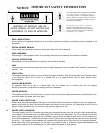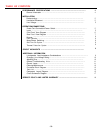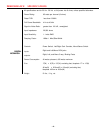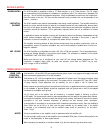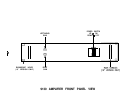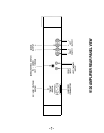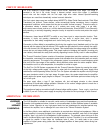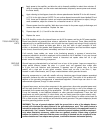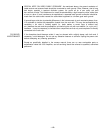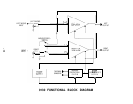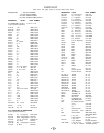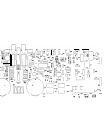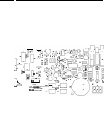
CIRCUIT HIGHLIGHTS
The 9130 employs a single ended, current source driven, differential input stage. This stage is
connected to the rest of the circuitry through a balanced push-pull current mirror system. A combination
current mirror and bias multiplier drive the final output stage driver emitter followers.
Special linearizing
techniques are used that dramatically reduce harmonic distortion.
The final output stage uses two multiple lateral MOSFET’s (Metal Oxide Semiconductor Field Effect
Transistors) per channel. These devices, unlike conventional bipolar transistors, have a negative
temperature coefficient, which means that they do not exhibit “thermal runaway”. Thermal runaway is
a phenomenon whereby a transistor heats up as it conducts more current, which causes it to get hotter,
and conduct more current, and so on, until the device self destructs. Since MOSFET’s are inherently
self-protecting, no sonically degrading, complex circuitry is required to monitor and protect the output
devices.
Furthermore, these lateral MOSFET’s exhibit a very linear input to output transfer function. Their
connection in circuits and operating characteristics are very similar to vacuum tubes, which is perhaps
responsible for their widely recognized sonic trait of being very “musical” and non-fatiguing.
Conversion to Mono Mode is accomplished by driving the negative input (feedback point) of the right
channel with the output of the left channel. This causes the right channel to mirror exactly the output
of the left channel, but 180 degrees out of phase. This creates twice the voltage swing to be available
across the two red output binding posts. This simple method of bridging the amplifier (involving only
one resistor) eliminates the costly and sonically degrading inverter circuitry used in other amplifiers.
The Thermal Protection System consists of thermistors (temperature sensitive resistors) mounted to
the heatsinks, connected to a comparator system that activates when the heatsinks reach an unsafe
operating temperature. The output of the comparator system is connected to a small transistor switch
that turns off the input stage of the amplifier, which effectively shuts down the entire amplifier. When
the heatsinks cool to a safe temperature, the amplifier is turned on again.
The Soft Turn On/Off System cooperates with the Thermal Protection System by sensing the output
of the high voltage power supply. At power up, when both the comparator and power supply have
stabilized to normal operating levels, the Soft Turn On System activates the amplifier circuitry through
the same transistor switch in the input stage. At power down, the system deactivates the amplifier
rapidly before the power supply begins to collapse. This system eliminates spurious noises during the
turn on/off cycle.
The power supply utilizes a large El type transformer with dual multi-tapped primaries to allow alternate
connections for world-wide voltage operation. Selection of the various voltage options is made via a
simple multi-position plug inside the unit.
The transformer feeds a conventional split full-wave bridge rectifier system.
Power supply capacitance
is 6800
UF
per rail. Further power supply de-coupling is provided for the input stage of each channel.
ADDITIONAL INFORMATION
LOUDSPEAKER
LOAD
IMPEDANCE
CONSIDERATIONS
The 9130 Amplifier is suitable for use with a wide variety of loudspeaker types and load impedances.
Operation into impedances below 4 ohms is not recommended, as little additional power is available
below 4 ohms. Operation at very high power levels into low impedances for extended periods may
overheat the amplifier, but no damage will occur due to the Thermal Protection System.
In the Mono Mode, some additional consideration is required when driving low impedances. When a
stereo amplifier is converted (bridged) into a single channel mono amplifier, each half of the bridged
amplifier “sees” only half of the loudspeaker’s load impedance. For example, when driving an 8 ohm
load in the Mono Mode, each channel is actually loaded to 4 ohms. Therefore, it is not recommended
to operate the amplifier in Mono Mode into impedances below 8 ohms. It is usually better to use a stereo
amplifier of higher power rating (rather than two bridged amplifiers of lower power) when driving low
impedances.
-9-



